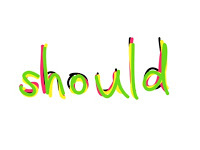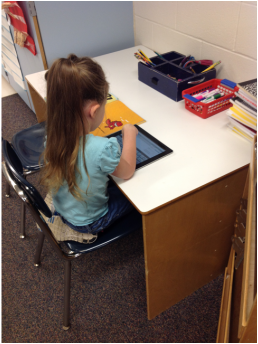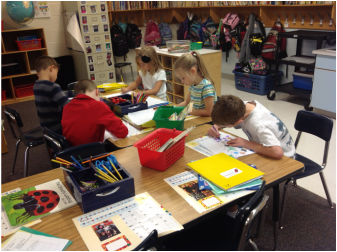Word Study:
Reviewing words we've learned as well as spelling strategies we have studies, I have realized students could use some extra practice. Here are some tips that may help you at home:
1. Practice High Frequency Words: These are words students need to be able to know how to read and write in a snap. They are not always spelled exactly like they sound. Here are a few I'm noticing students need to practice: should (could, would), they, want, saw and about. 2. Practice features: We have learned about th, sh, and ch at the beginning and end of words. Students should be using these consistently in their writing. 3. We're working on these new features: tr (isn't chr): This affricate is tricky for students. They really just have to know which one is right. We are looking at words with the "tr" at the beginning including tree, train, try, truck. dr (isn't jr): This is another tricky one. We've looking at words like drop, drink, and drive. 4. Next: we will be working on beginning blends starting with s blends like st, sp, sl, sc/sk, sm, sn, sw. After students get the hang of these blends we'll move to l blends (bl, fl, gl, pl, sl, etc.) and r blends (br, dr, fr, gr, pr, etc.). |
Practicing Word Study at HomeIn the beginning of first grade students are often letter name spellers. They spell words by listening for the sounds. As the year progresses, students need to begin to move from writing words by the way they sound to making sure they also look right.
Practicing writing words is one way to build this word knowledge. Here are some tips: Rainbow Write: Write words on a large card or piece of paper. Students then trace words with colorful crayon or marker, saying the sounds as they write the letter. Window Markers: Crayola makes window markers that are a fun way to practice writing words. Write It: Other fun ways to practice writing words: pudding, sand, shaving cream, finger paint and SNOW (sorry, couldn't resist the snow…brrrr.) Build It: Use magnetic letters, cut printed letter squares, letter dice, etc. to practice building the world. Build it, say it, take it apart and try again. Connections: Use words you know to make new words. (look can make book, took, crook, shook, etc. / the th at the beginning of this is also in the, them, they, etc.) Find It: Search for words in books, newspapers, magazines, and other print around our daily worlds. Apps: These apps may be helpful in practicing: ShowMe, Skitch and Kids Learn. |
Writer's Workshop:
|
Our VoiceThread
Please view the VoiceThread above (it has two slides). It will tell you more about the unit of study we are completing. It should help you to know what to look for in your child's writing. Students have taken time to share some of their favorite ideas for writing. Writers are just getting started and need to gain confidence. Please look for the good things your child is doing and make sure to comment on what you have noticed. CELEBRATE the learning. Enjoy! NEXT STEPS This week as I confer with students during Writer's Workshop we will be discussing their new goals. I will e-mail a copy of the goal sheet to you by the end of the week so you can see what they are working to learn. Our next unit of study: Personal Narrative. |

